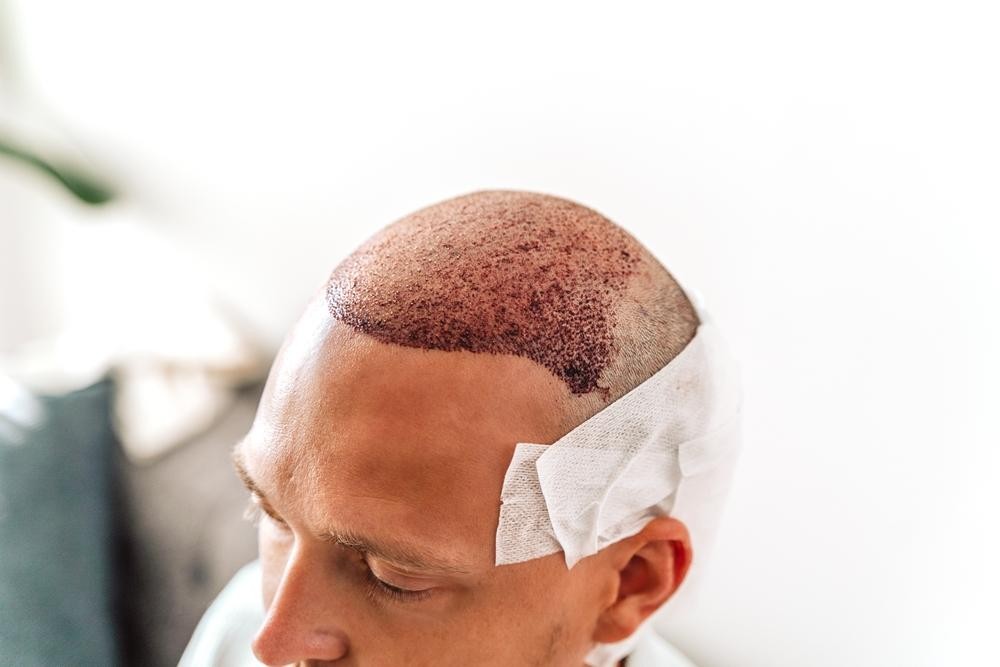
Hair transplants can be life-changing—but as the weeks roll by, it’s normal to wonder if your results are progressing as expected. At 4 weeks after hair transplant, most patients are past the initial healing stage but haven’t yet seen new growth. This transitional period often raises questions about shedding, scalp care, and possible complications.
At Rejuvena Cosmo Care, a leading plastic surgery clinic in Jaipur, we help patients navigate every phase of recovery with precision and reassurance. Here’s what to expect one month into your hair restoration journey.
What Happens 4 Weeks After Hair Transplant
By the fourth week, most patients notice a calmer scalp. Redness has faded, scabs have fallen off naturally, and any swelling or tenderness has significantly diminished. However, this is also the time when shock loss—the temporary shedding of transplanted hairs—may be most visible.
Though it might feel alarming, shedding at this stage is a normal part of the follicular cycle. The hair shafts fall out while the grafts settle into a dormant phase. The new growth typically starts around the 3-month mark.
Patients may also experience:
- A slightly dry or itchy scalp
- Uneven texture or mild bumps where grafts were placed
- Reduced sensitivity in the donor or recipient areas
Worried about your healing? Schedule a follow-up with Rejuvena Cosmo Care—your trusted plastic surgery clinic in Jaipur for expert post-transplant care.
4 Weeks After Hair Transplant – Recovery Timeline and What to Expect
Here’s a general look at how your recovery typically unfolds during the first month after your hair transplant:
- Weeks 1–2: Your scalp will feel sensitive, and you’ll notice redness and scabbing as the grafts settle securely into place. This is a crucial period for initial healing.
- Week 3: Scabs will start to come off naturally on their own. Swelling and redness should begin to fade, and your scalp will look calmer.
- Week 4: You may notice shedding of the transplanted hairs — this is completely normal and part of the process. By the end of the fourth week, most visible signs of surgery, like scabs and redness, will have resolved.
Even though your scalp may appear “back to normal” by week four, internal healing is still in progress. The transplanted follicles are now entering the telogen (resting) phase, which is an essential step before they start producing new, healthy hair in the coming months.
Hair Transplant Complications – 4 Weeks Later
Although major issues are rare at the four-week mark, some symptoms should not be ignored:
- Persistent swelling or redness: Could indicate lingering inflammation or infection.
- Bumps or pustules: May be a sign of folliculitis—a minor infection around the hair follicle.
- Unusual scalp pain or warmth: Signals the need for medical review.
- Sudden loss of large hair patches: Could suggest an immune-related condition, though rare.
Timely consultation ensures minor problems don’t turn into long-term issues.
Post‑Operative Care – 4 Weeks After Hair Transplant
Here’s what you should do:
- Washing: Use a gentle, sulfate-free shampoo. Avoid rubbing or high-pressure water.
- Moisturizing: Apply doctor-approved moisturizers if your scalp feels dry or irritated.
- Hair Products: Avoid gels, sprays, or coloring products for another couple of weeks.
- Sun Protection: Wear a soft, loose cap outdoors to protect from UV exposure.
- Exercise: Light workouts are fine. Avoid heavy lifting or anything that causes sweating.
- Sleeping: You can resume normal sleep positions but avoid pressing down hard on grafted areas.
When to Consult a Surgeon
You should consult your plastic surgeon if:
- Scalp tenderness or itching worsens instead of improving
- Redness returns or spreads after disappearing
- Lumps, pimples, or fluid discharge appear
- Hairline looks patchy or uneven after the initial shed
- You have any ongoing doubts about your results
Professional oversight during this time is crucial for long-term success.
Conclusion
Four weeks after hair transplant marks a turning point. The visible signs of surgery are mostly gone, but hair regrowth is still ahead. Shedding is common at this stage, and it’s not a sign of failure—it’s the natural path to stronger, healthier follicles.
Sticking to your post-care routine and keeping in touch with your surgeon ensures everything progresses smoothly. At Rejuvena Cosmo Care, we’re here to support every step of your transformation—because lasting confidence begins with expert care.
Frequently Asked Questions
Can I wear a cap after 1 month of hair transplant?
Yes, you can wear a loose-fitting cap. Just ensure it doesn’t press tightly against the grafted area. Breathable, soft materials are best.
Is swelling 30 days after hair transplant normal?
Most swelling subsides by the end of week two. If you’re still experiencing swelling after 30 days, it’s best to consult your surgeon.
Disclaimer: This page is for informational purposes and not for promotional use.


